Admist coronavirus, I’m sticking to what I – and a lot of other people – love most: cooking and baking. One challenge I’ve presented to myself is to make a dish (or dishes) of international cuisines every week, learn some words from the language, and e-visit some of the country’s landmarks. Some of these dishes will be more complex than others, based on what ingredients I have available in the house.

Oui, oui, il est le temps pour découvrir la cuisine française! French cuisine is reowned as one of the best cuisines in the world, and top chefs, from Julia Child to Yotam Ottolenghi, got their classical training from nowhere else but the famous Cordon Bleu.
I’m no Cordon Bleu chef, but, this week, I tried my hand at two simple, convenient french recipes: crêpes and baguette. Allons-y!
THE DISH #1: CRÊPES AVEC “NUTELLA“ (PALEO)
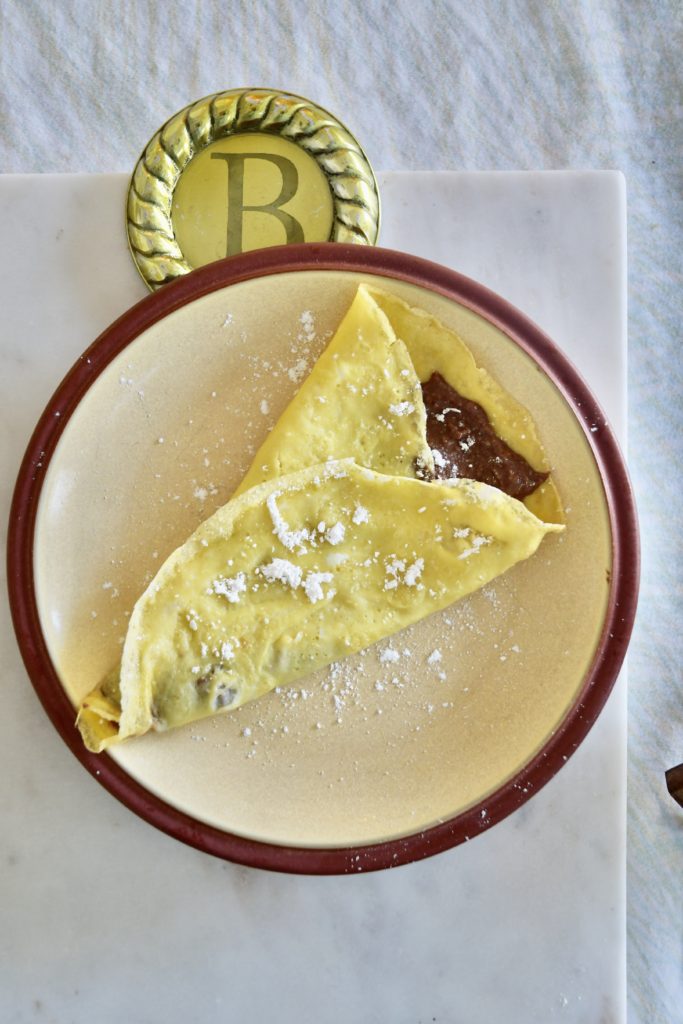
Crêpes originated in Brittany, a northern region of France, and they’re the French version of America’s beloved pancakes. But in times like these, I would argue that they’re even better to make. Why? Because they use less flour and no leavening agent (score!).
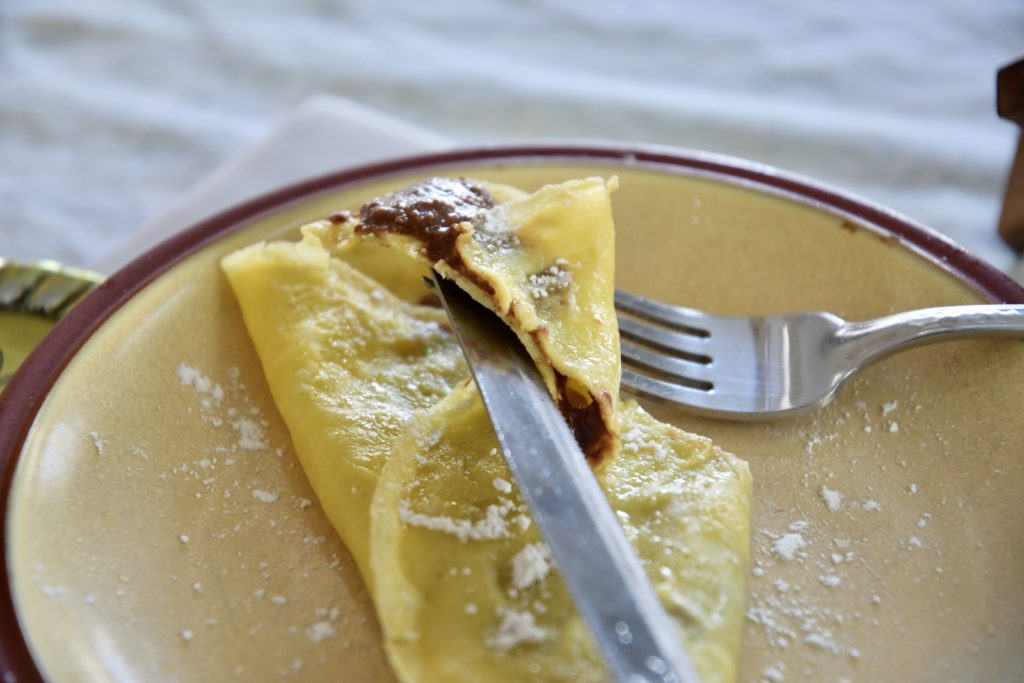
Crêpes can be made sweet or savory depending on what you pair it with. If you’re more of a sweet tooth, you can pair it with homemade chocolate hazelnut spread, or some lemon juice, ricotta, and sugar, or berries with whipped coconut cream. If you’re more of a savory person, add in some smoked salmon, sautéed mushrooms, or ham and cheese, like the French.
Whatever amazing topping you decide to pair your crêpes with, the basic ingredients are quite simple:
- Almond flour. Poudre d’amandes.
- Arrowroot starch. Amidon de marante.
- Eggs. Oeufs.
- Almond milk. Lait d’amades.
- Vanilla extract. Extrait de vanille.
- Salt. Sel.
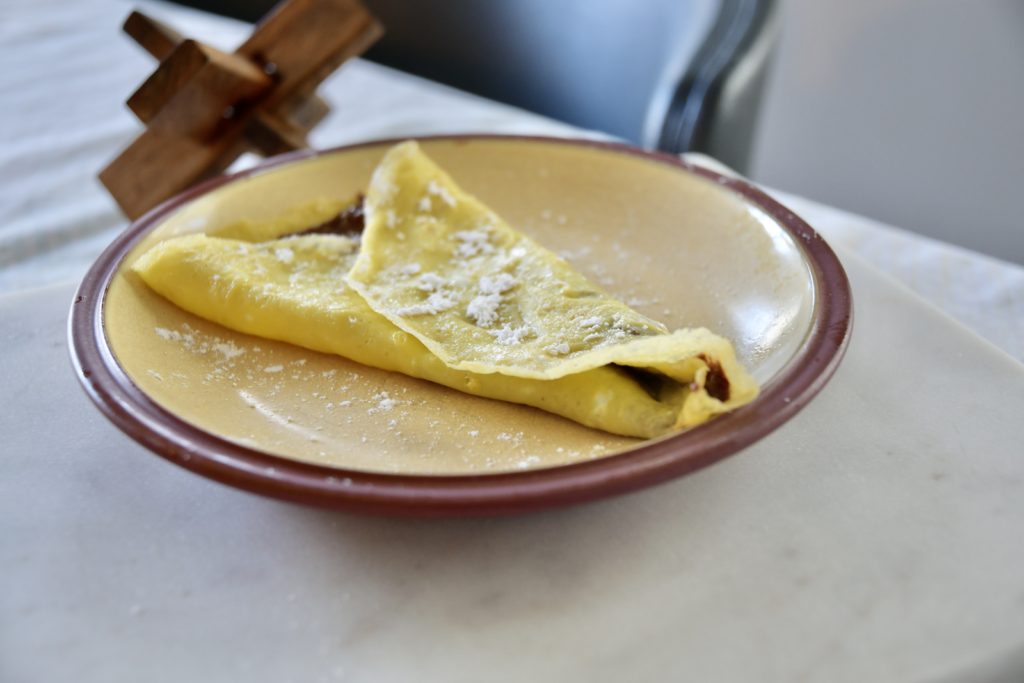
Here’s the recipe (ricette):
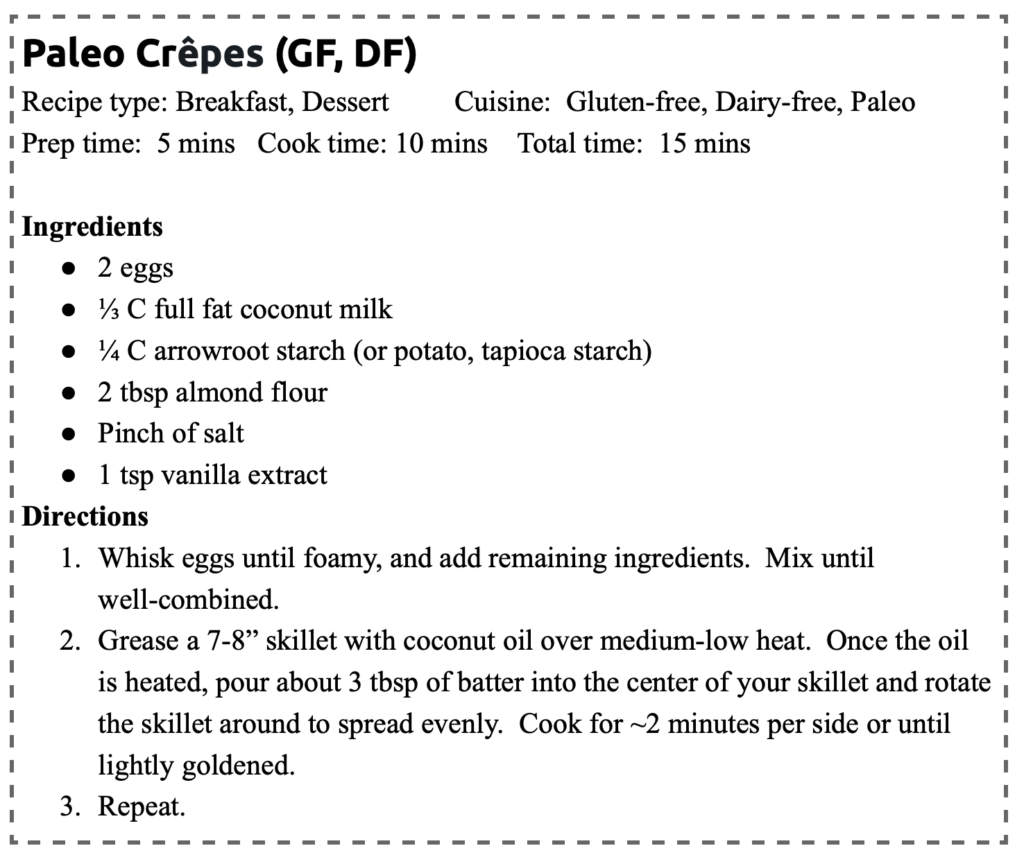
THE DISH #2: BAGUETTE (V)
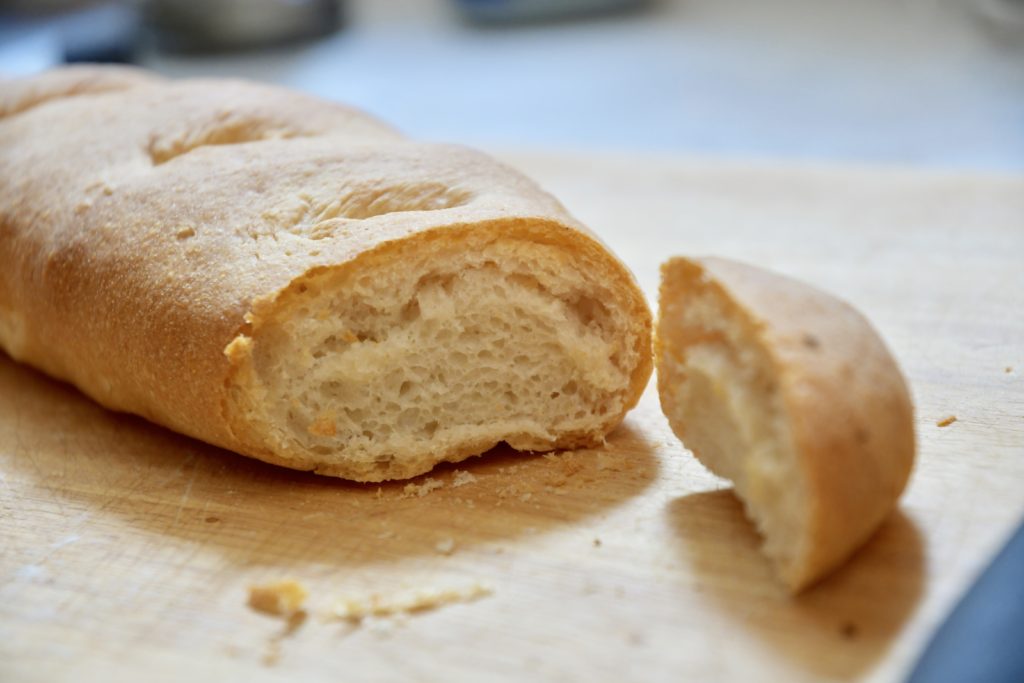
What’s more quintessentially french than the classic baguette? I made a baguette for my end of the year AP French project last year, and it was a hit in class and at home. Here’s the video on how to make it (in French).
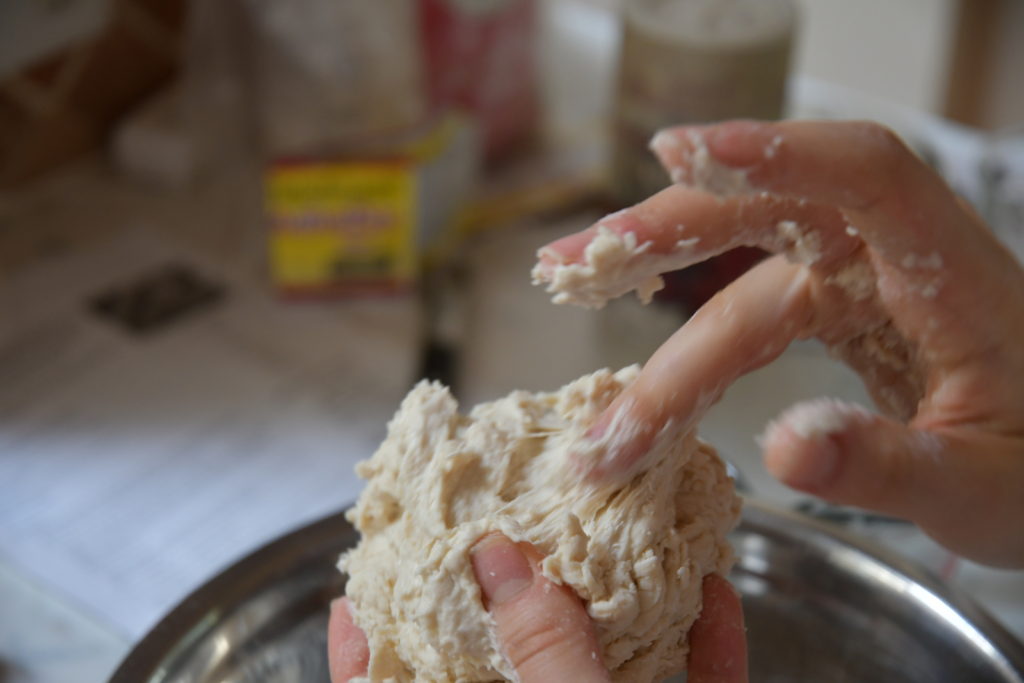
I followed King Arthur’s baguette recipe, which calls for relatively simple ingredients. I know sourdough is all the craze at the moment, but sometimes, you just want simple, easy bread, without the complicated sourdough starter.
Ingredients:
- Water. Eau.
- All-purpose flour. Farine.
- Active dry yeast. Levure.
- Salt. Sel.
For a full French experience, pair it with butter or any spreadable cheese. For us dairy-free folks, I find Miyoko’s butter to be the best. The French also pair their baguettes with jam (confiture) or chocolate hazelnut spread.
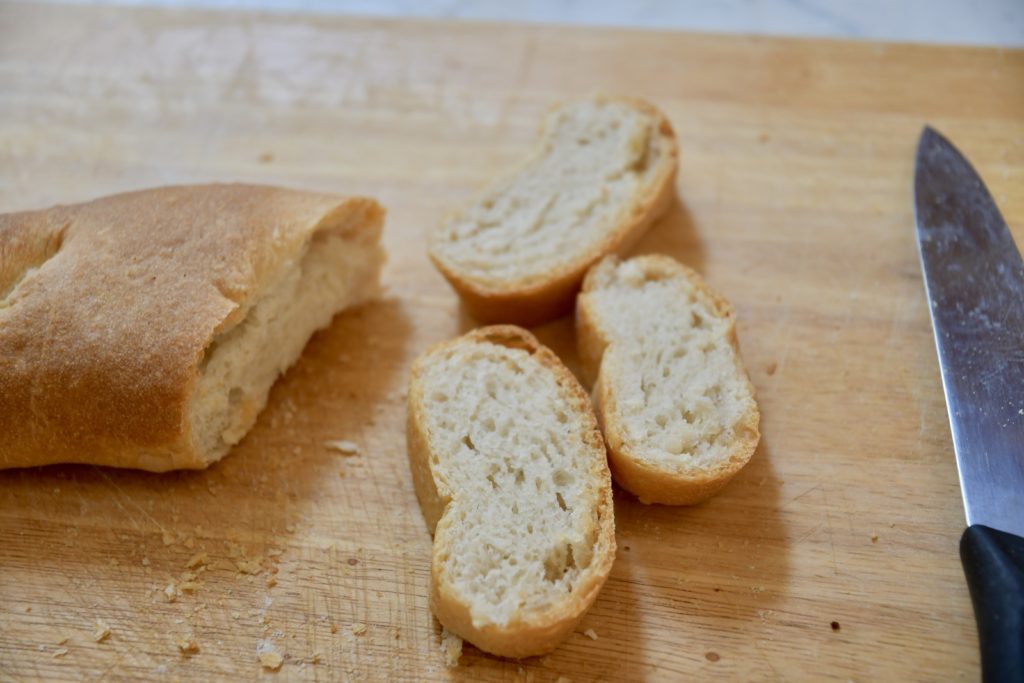
Bon appétit!
USEFUL WORDS
Onto the language section. I’ve been taking French for eight years (!), so I have a bit of experience when it comes to the language. Let’s get learning!
Greetings
- Bonjour. Ciao. Salut. –> Hello
- Au revoir. À demain. –> Bye. See you tomorrow.
- Ça va? –> How are you?
- RESPONSE: Ça va bien / Comme çi comme ça –> I’m good / So so
- Et toi? (Informal) and Et vous? (Formal) –> And you?
- RESPONSE: Ça va bien / Comme çi comme ça –> I’m good / So so
Conversation
- D’où viens-tu? (Informal) and D’où venez-vous? (Formal) –> Where are you from?
- RESPONSE: Je suis de ___ –> I’m from ___
- Comment t’appelles-tu? (Informal) and Comment vous appelez-vous? (Formal) –> What is your name?
- RESPONSE: Je m’appelle ___ –> My name is ___
- Qu’est-ce que tu aimes faire? (Informal) and Qu’est-ce que vous aimez faire? (Formal) –> What do you like to do?
- RESPONSE: J’aime ___ –> I like to ___
- Cuisiner – to cook
- Danser – to dance
- Jouer aux sports – play sports
- Voyager – to travel
- RESPONSE: J’aime ___ –> I like to ___
- Je voudrais ___ –> I would like ___
- Merci –> Thank you
- De rien –> You’re welcome
Slang
I think one of the best parts and ways of really getting a taste of a culture (besides the food) is to know its slang. In French, slang is l’argot.
- Fric –> money
- Bouffer –> to eat/scarf down
- Ex: J’ai bouffé au moins trois crêpes ce matin. –> I ate at least three crêpes this morning.
- Laisse tomber –> Let it go
There’s also verlan, which is a type of argot, in which you invert syllables of a word. So femme (woman) become meuf, français becomes céfran, métro becomes tromé and so on.
LANDMARKS
We all know that the Eiffel Tower is a classic French landmark – but what else is there? A lot.
Palace of Versailles

Versailles was built for Louis XIV, and eventually housed his son and his wife, Marie-Antoinette, until after the French Revolution.
Mont-Saint-Michel Abbey

This monument rests on a rock and depending on the tidal waves, can be surrounded by waters or land.
Provence Lavender Fields

Lavender blooms from mid-June to mid-August, and Provence is home to these gorgeous, fragrant seas of purple.
Mont Blanc

Mont Blanc is the highest mountain in Europe, and is known as a top skiing and hiking destination.